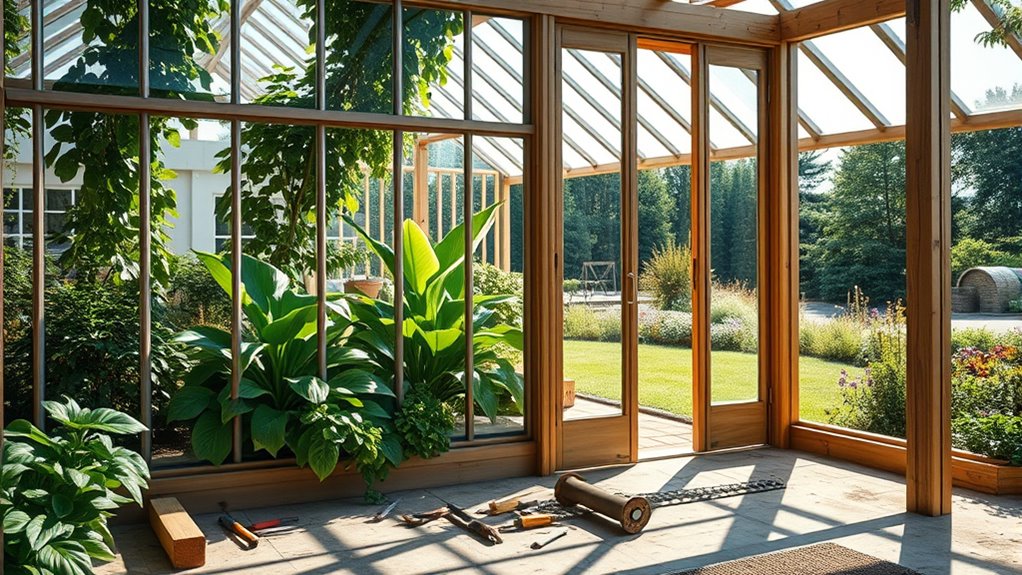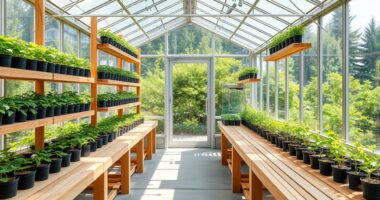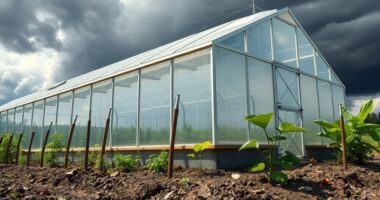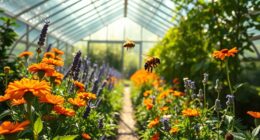Constructing a freestanding greenhouse gives you flexibility in placement and design, allowing for better sunlight and ventilation options. You’ll enjoy custom climate control, which promotes healthy plants. However, consider the cost implications, as these structures can range from $720 to over $20,000, including ongoing utility expenses. Accessibility features can enhance your experience, but remember to factor in energy efficiency. If you want to explore more about these aspects, there’s more to discover.
Key Takeaways
- Freestanding greenhouses offer flexibility in placement, maximizing sunlight and accessibility for plant growth.
- They provide customizable ventilation and lighting, promoting ideal growing conditions for diverse plants.
- The design allows for expansion with additional structures, accommodating future gardening needs.
- Energy efficiency can be enhanced through insulation and independent heating systems, though initial costs may be high.
- Accessibility features like wide pathways and ramps improve usability for all gardeners, including those with mobility challenges.
Benefits of Freestanding Greenhouses
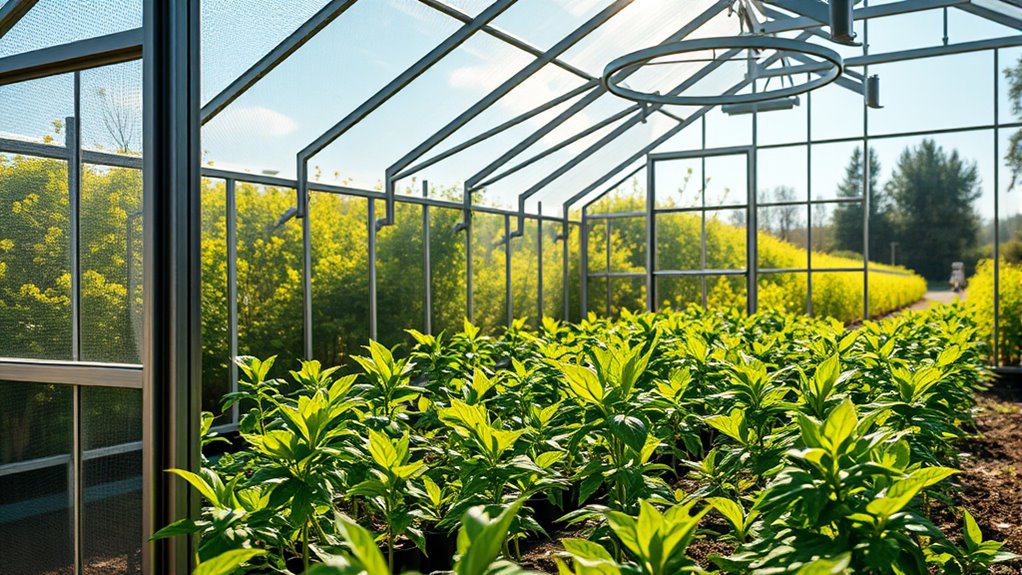
Freestanding greenhouses offer a range of benefits that can significantly enhance your gardening experience.
You have the flexibility to place them anywhere on your property, ensuring optimal sunlight and easy access. With the option to build on well-drained soil, you promote plant health while maintaining stability.
Place your greenhouse for optimal sunlight and easy access, promoting plant health and stability on well-drained soil.
These structures can be designed to withstand harsh winter winds when positioned thoughtfully. You can easily expand your gardening efforts by adding more greenhouses as needed, catering to diverse plant environments.
Plus, the variety of styles available allows you to personalize your greenhouse to fit your aesthetic. With customizable ventilation and lighting, you can create the perfect growing conditions for your plants, maximizing your gardening success.
Design and Structural Considerations
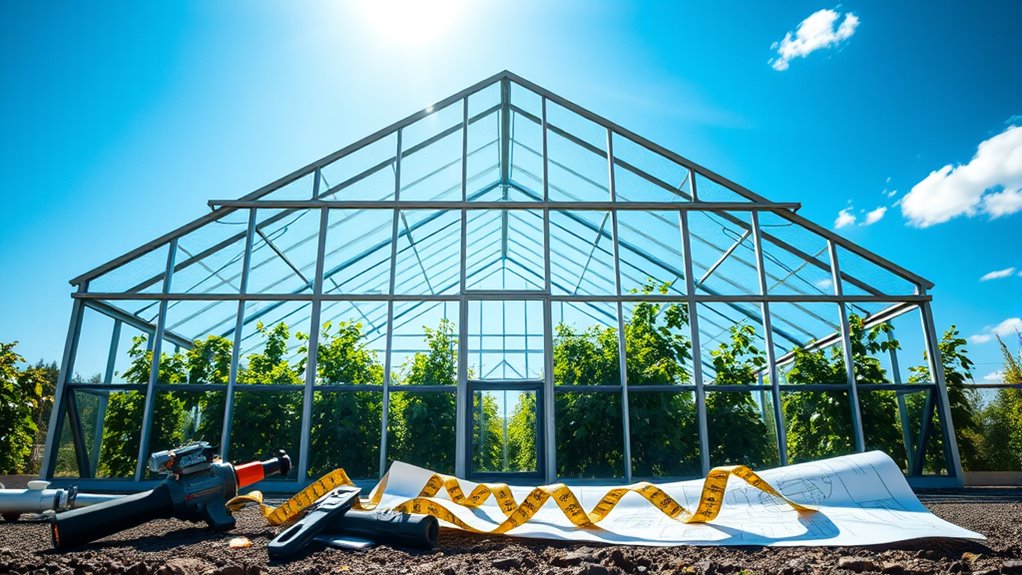
When planning your greenhouse, it’s essential to consider design and structural elements that will impact both functionality and aesthetics.
Freestanding greenhouses offer design flexibility with various roof shapes like quonset, gothic, or gable, each catering to different needs. You can choose from varying sizes, adapting to your space while maximizing sunlight exposure. Additionally, consider incorporating energy-efficient systems that can help maintain optimal temperatures and reduce energy costs. Utilizing portable AC units can enhance comfort during hot weather, ensuring a stable environment for your plants.
Ensure structural integrity by selecting framing materials such as wood, steel, or aluminum, based on your climate and load requirements.
Proper site selection is crucial; look for well-drained areas with good sun exposure and consider wind protection. Additionally, understanding greenhouse climate management will help you create a suitable environment for your plants.
Lastly, think about layout for efficient space utilization, incorporating walkways and future expansion plans to support your gardening ambitions.
Energy Efficiency and Climate Control
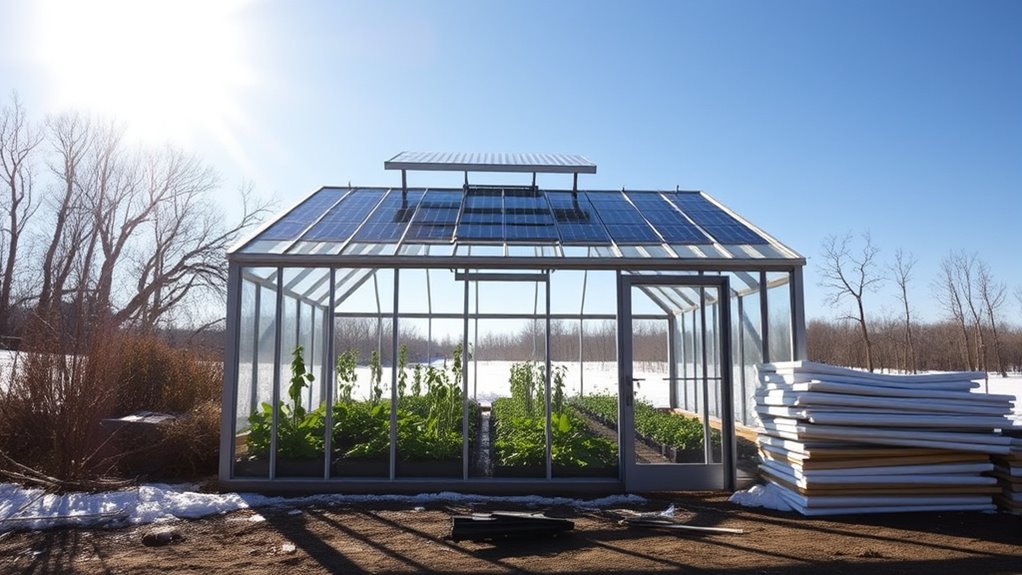
While planning your greenhouse setup, prioritizing energy efficiency and climate control is crucial for maximizing both plant health and operational costs.
Freestanding greenhouses generally have higher heating costs due to their increased surface area. To combat this, consider using insulating materials like wood for frames and double-layer polyethylene film for glazing. Each greenhouse can be heated independently, allowing for targeted energy use.
Effective ventilation systems, such as roll-up sidewalls, aid in cooling, while managing humidity and CO2 is essential for plant health. Implementing an energy conservation checklist can pinpoint areas for improvement, ultimately reducing energy consumption and enhancing sustainability.
Accessibility and Convenience Factors
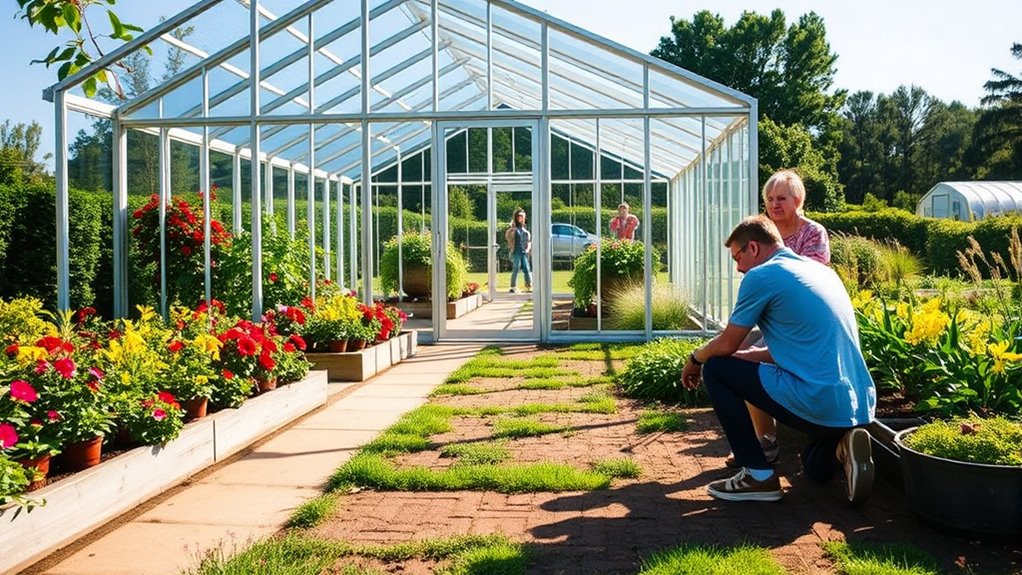
Accessibility and convenience are vital considerations for anyone looking to set up a greenhouse that meets diverse needs.
You’ll want to ensure wide pathways for easy wheelchair access and consider installing wider doors and lower thresholds for smooth entry. Internal flooring should be even, using paving slabs or concrete to prevent mobility issues. Incorporating ramps can further enhance accessibility.
On the convenience side, a freestanding greenhouse gives you the flexibility to choose the best location for sunlight.
Including storage and workstations inside minimizes trips back to the house, although bad weather can make access challenging. Additionally, you can design the space to suit your needs, ensuring it’s practical while maximizing your growing potential.
Cost Implications and Budgeting
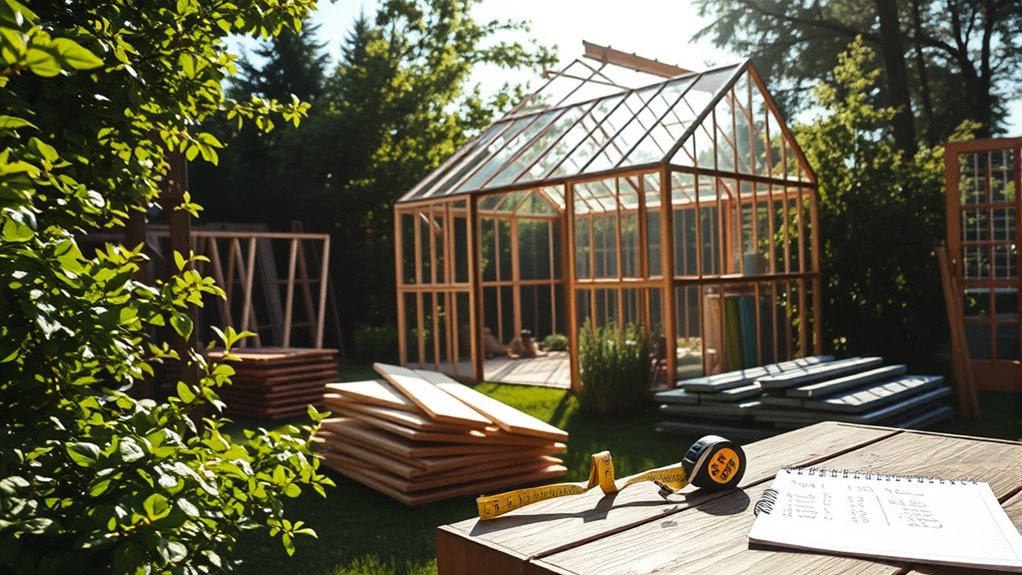
Setting a budget for a freestanding greenhouse is essential, as costs can range from $720 to $15,000 for a standard 12′ x 12′ structure. The national average sits around $10,000, but larger greenhouses can push that figure to $20,000 or more.
Material choices significantly impact your budget, with options from $3 to $18 per square foot. If you’re considering professional installation, expect to pay around $11,000, but DIY can save you about 40%.
Don’t forget ongoing costs for heating, ventilation, and irrigation systems, which can add up quickly. Finally, think about maintenance and repairs as part of your long-term budget to ensure your greenhouse remains functional and efficient.
Frequently Asked Questions
How Do I Choose the Right Location for My Greenhouse?
To choose the right location for your greenhouse, assess sun exposure, ensuring it gets at least six hours of direct sunlight daily.
Check wind patterns and avoid areas with nearby structures that block light.
Look for level ground with good drainage and easy access.
Consider utilities like water and electricity, and think about potential expansion space.
Lastly, familiarize yourself with local zoning regulations to avoid any legal issues.
What Plants Grow Best in a Freestanding Greenhouse?
Imagine you’ve set up your freestanding greenhouse and want it to thrive.
To maximize your growth, consider plants like tomatoes, which flourish in the warm, controlled environment. They need consistent light and warmth.
You might also try herbs like basil, which love stable conditions.
Don’t forget about vibrant orchids; their beauty can enhance your greenhouse while thriving in humidity.
Choose a mix to enjoy both aesthetics and productivity in your space!
How Can I Enhance the Aesthetic Appeal of My Greenhouse?
To enhance the aesthetic appeal of your greenhouse, start by choosing a theme that resonates with you, like a tropical retreat or floral wonderland.
Incorporate a variety of colors and textures through plants and decor. Use natural and supplemental lighting to create a warm ambiance, and select materials like reclaimed wood for added warmth.
Don’t forget to add personal touches that reflect your style, making it a unique and inviting space.
What Are Common Pests in Freestanding Greenhouses?
Imagine your greenhouse as a serene oasis, yet even paradise can attract unwelcome guests.
Common pests include aphids, spider mites, and whiteflies, all eager to feast on your plants. Just like uninvited party crashers, they can wreak havoc if you don’t act fast.
Keep an eye out for these pests, implement preventive measures, and maintain a healthy environment to ensure your green sanctuary thrives without the interference of these tiny intruders.
How Do I Winterize My Freestanding Greenhouse?
To winterize your freestanding greenhouse, start 4 to 6 weeks before the first frost.
Inspect the structure for damage, then clean it thoroughly to prevent pests.
Ensure your heating system works well and add insulation like bubble wrap to retain heat.
Check ventilation and drainage systems to avoid freezing issues.
Finally, choose hardy plants for winter, and monitor the temperature and humidity to keep everything thriving during the colder months.
Conclusion
In conclusion, a freestanding greenhouse can be a gardener’s sanctuary, offering unique benefits like improved accessibility and climate control. While it requires thoughtful design and budgeting, the rewards of nurturing your plants in a controlled environment often outweigh the challenges. Consider your specific needs and resources—like choosing the right soil for a thriving garden—before making your decision. With careful planning, your greenhouse can flourish, just like the plants you’ll cultivate within it.
